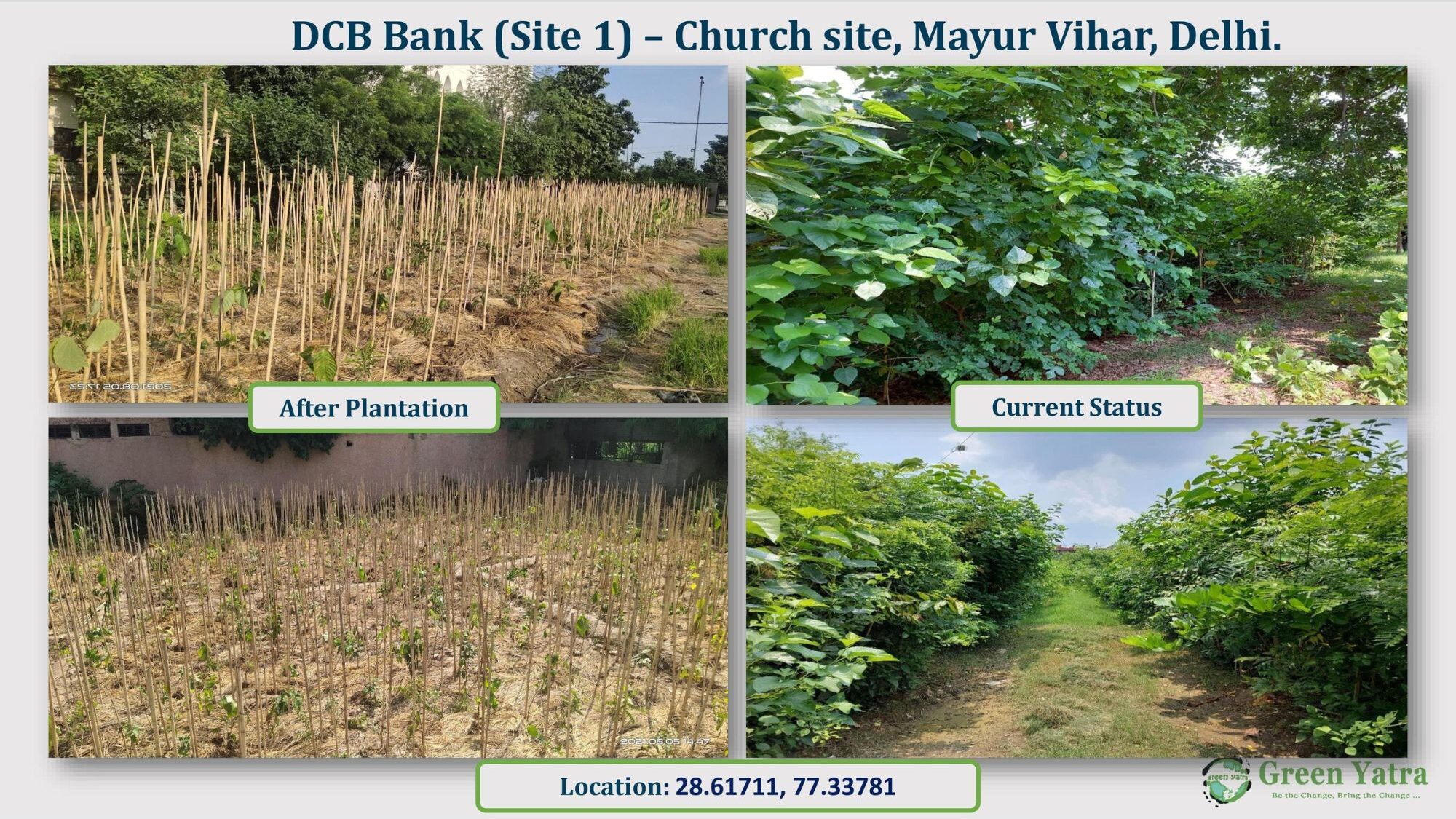
Miyawaki forest at Church site, Mayur Vihar
With increasing urbanisation, cities are being converted into concrete jungles with no space for natural vegetation. To change this seemingly dystopian environment, Green Yatra has planted over 1 lakh saplings in various parts of Delhi-NCR using the Miyawaki method.
The method was invented by Japanese botanist Dr Akira Miyawaki to create urban dense forests on small patches of land. According to Durgesh Gupta, Founder of Green Yatra, “In a minimum size of land, if you want maximum plantation activity, then Miyawaki is the solution.”
Green Yatra, a Mumbai-based NGO which works for the protection and conservation of nature across the nation, has been working in Delhi for almost eight years. This innovative methodology comprises the planting of native species, so that they flourish irrespective of the climate.
“We plant saplings with 1-2 feet height and in per square metre 3-4 saplings. These include trees, plants and shrubs”, says Gupta explaining the Miyawaki procedure.
Careful planning
Before the plantation, a biomem survey (environmental monitoring) of the nearby forest is conducted to understand the local species. Saplings are procured based on this data. Every forest will have at least 40-50 different varieties of species. The biggest advantage of Miyawaki forest is that after three years, it will go maintenance-free.
“This Miyawaki forest is vital because cities are facing the extreme consequences of climate change”, says Gupta.
With the Air Quality Index (AQI) decreasing gradually, the plantation helps to reduce the pollution and dust and provides multiple other benefits.
Each plot selected for Miyawaki plantation has a sub-plot, which will host some dominating species like kadamba, badam or palash depending on the location.
Saplings are planted in the sub-plot based on the dominant species index. Care is taken to choose native species and ensure biodiversity before the distribution of saplings.
The other pre-requisites are understanding and studying the soil, micro flora of the forest, availability of sunlight, water and other climate conditions.
The major tall trees which were planted across Delhi include jackfruit, gooseberry, kokum and wild guava, among others. Trees with canopies include peepal, neem, banyan, teak, and mango.
Gupta elaborates, “In the selected areas, we are trying to create a bio mimic with the same analysis ratio of the forest which is available, and it is being adapted at other locations also.”
Ecological balance
Raj Dwivedi has been working for Green Yatra as Operations Manager for 10 years. He manages the plantation work for Delhi-NCR region. “Miyawaki is the most preferable method if you want to achieve maximum results in a very limited space”, he says.
Apart from providing greenery, these urban forests increase the carbon biodiversity in the area, thus achieving carbon neutrality. They filter pollutants and give fresh oxygen. Carbon sequestration (capturing and sorting atmospheric carbondioxide) also increases by 30% in this mode of plantation.
These urban forests regulate water floods, control stormwater and build climate change mitigation. The project execution includes five processes: excavation, soil preparation, bed preparation, designing and planting.
While talking about the procurement of land, Dwivedi says, “We usually tie up with the government for the land and sign a contract for taking care of the forest for three years, because after that, the forest is self-sustainable.”
He adds that the materials are outsourced from the vendor, and they are in contact with the labourers too. They have taught the labourers the whole process of how to develop the forest, so the task has become more manageable now.
Once the process is completed, the forest grows on its own, increasing the biodiversity and providing a home for multiple organisms.
Green fingers
In the national capital region, Green Yatra has been functioning since 2015. However, the pilot Miyawaki forest plan was initiated in 2018 with 3,000 saplings at Sanjay Gandhi Transport, Samaypur Badli, in association with Indian Oil Corporation.
This was followed by 5,500 saplings at Shivaji Maharaj Park at Mayur Vihar, 7,000 saplings at St Stephen’s church at Mayur Vihar Phase 3. The other sites include Dallupura Park and Dwarka Sector 17.
“We have done a lot of plantations in the NCR for the Noida Development Authority and have planted 60,000 saplings at Amarpur village in Greater Noida for HCL foundation”, Gupta adds.
For more stories that cover the ongoings of Delhi NCR, follow us on:
Instagram: instagram.com/thepatriot_in/
Twitter: twitter.com/Patriot_Delhi
Facebook: facebook.com/Thepatriotnewsindia
The four cases are linked to the land-for-jobs and IRCTC scam, which are being probed…
This was followed by the Delhi Development Authority (DDA), which addressed 4,804 of the 5,197…
These local stores stock thicker jackets, practical sweaters, and everyday layers that are designed for…
Veer Ahlawat’s final-round 67 sealed a three-shot win at the Rs 1 crore CIDCO Open…
OnePlus has launched the 15R smartphone and Pad Go 2 tablet in India, with prices…
Nearly 2,800 Delhi vehicles denied fuel on first day of 'No PUC, No Fuel' drive…